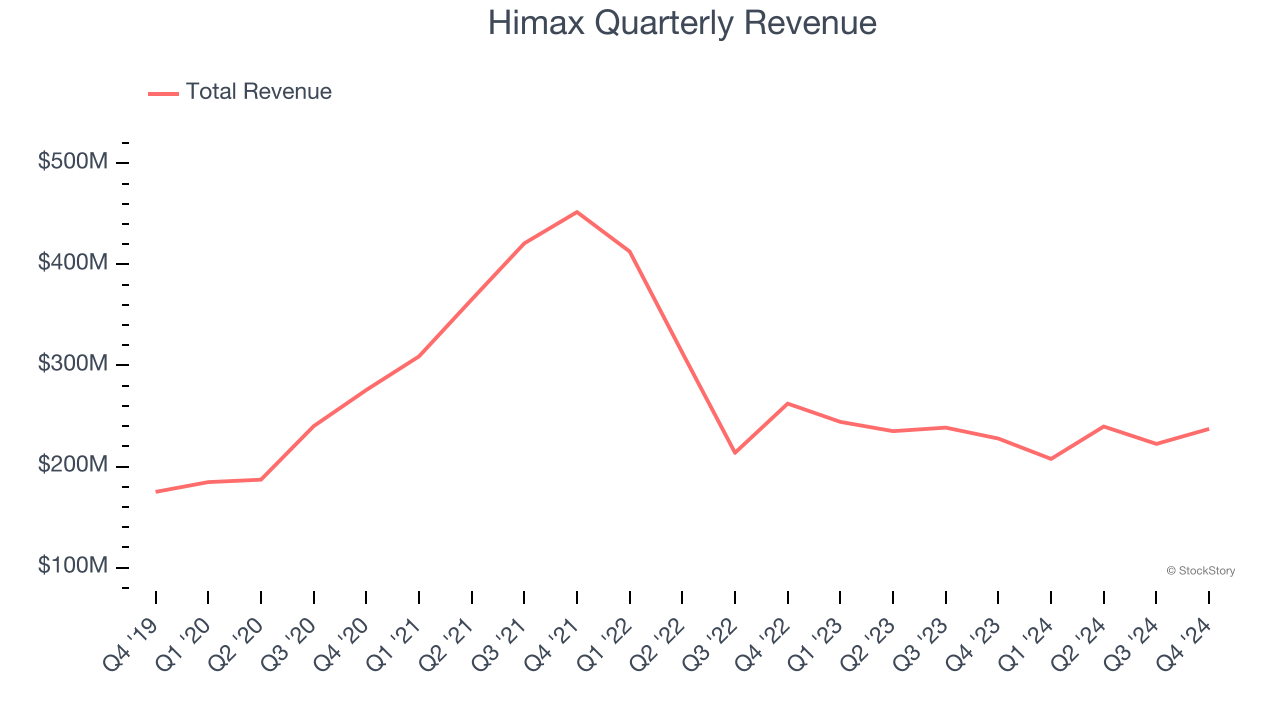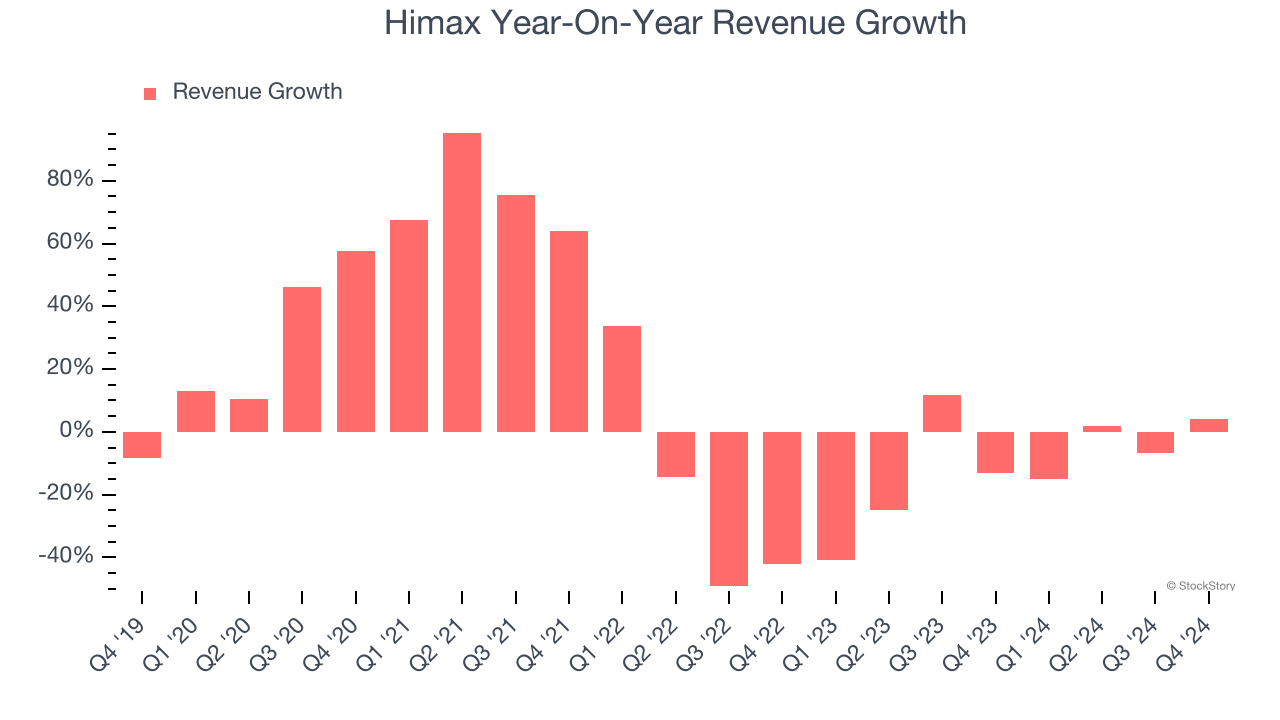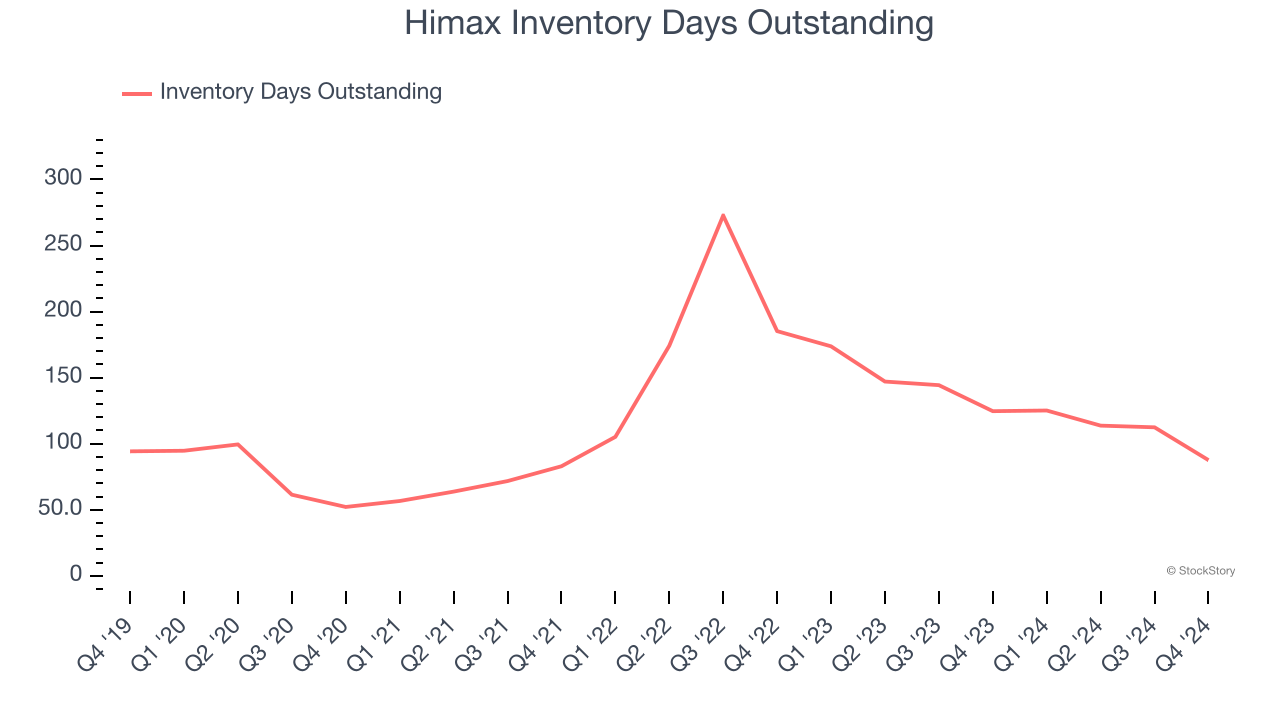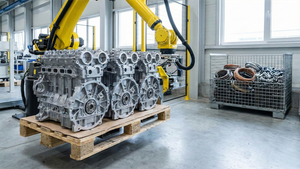
Semiconductor maker Himax Technologies (NASDAQ: HIMX) reported Q4 CY2024 results exceeding the market’s revenue expectations, with sales up 4.2% year on year to $237.2 million. On top of that, next quarter’s revenue guidance ($212.3 million at the midpoint) was surprisingly good and 5.8% above what analysts were expecting. Its GAAP profit of $0.14 per share was 40% above analysts’ consensus estimates.
Is now the time to buy Himax? Find out by accessing our full research report, it’s free.
Himax (HIMX) Q4 CY2024 Highlights:
- Revenue: $237.2 million vs analyst estimates of $221.1 million (4.2% year-on-year growth, 7.3% beat)
- EPS (GAAP): $0.14 vs analyst estimates of $0.10 (40% beat)
- Revenue Guidance for Q1 CY2025 is $212.3 million at the midpoint, above analyst estimates of $200.7 million
- Operating Margin: 9.7%, up from 7.3% in the same quarter last year
- Free Cash Flow Margin: 13.6%, down from 23.6% in the same quarter last year
- Inventory Days Outstanding: 88, down from 112 in the previous quarter
- Market Capitalization: $1.60 billion
“In 2024, our sales revenues in each quarter consistently outperformed guidance. We have consistently demonstrated our ability to handle most of rush orders, underscoring our agility, adaptability, strong capabilities in inventory management, and swift market responsiveness,” said Mr. Jordan Wu, President and Chief Executive Officer of Himax.
Company Overview
Taiwan-based Himax Technologies (NASDAQ: HIMX) is a leading manufacturer of display driver chips and timing controllers used in TVs, laptops, and mobile phones.
Analog Semiconductors
Demand for analog chips is generally linked to the overall level of economic growth, as analog chips serve as the building blocks of most electronic goods and equipment. Unlike digital chip designers, analog chip makers tend to produce the majority of their own chips, as analog chip production does not require expensive leading edge nodes. Less dependent on major secular growth drivers, analog product cycles are much longer, often 5-7 years.
Sales Growth
Examining a company’s long-term performance can provide clues about its quality. Any business can put up a good quarter or two, but the best consistently grow over the long haul. Unfortunately, Himax’s 6.2% annualized revenue growth over the last five years was mediocre. This was below our standard for the semiconductor sector and is a rough starting point for our analysis. Semiconductors are a cyclical industry, and long-term investors should be prepared for periods of high growth followed by periods of revenue contractions.

Long-term growth is the most important, but short-term results matter for semiconductors because the rapid pace of technological innovation (Moore's Law) could make yesterday's hit product obsolete today. Himax’s history shows it grew in the past but relinquished its gains over the last two years, as its revenue fell by 13.1% annually. 
This quarter, Himax reported modest year-on-year revenue growth of 4.2% but beat Wall Street’s estimates by 7.3%. Company management is currently guiding for a 2.3% year-on-year increase in sales next quarter.
Looking further ahead, sell-side analysts expect revenue to decline by 5% over the next 12 months. While this projection is better than its two-year trend, it's tough to feel optimistic about a company facing demand difficulties.
Here at StockStory, we certainly understand the potential of thematic investing. Diverse winners from Microsoft (MSFT) to Alphabet (GOOG), Coca-Cola (KO) to Monster Beverage (MNST) could all have been identified as promising growth stories with a megatrend driving the growth. So, in that spirit, we’ve identified a relatively under-the-radar profitable growth stock benefiting from the rise of AI, available to you FREE via this link.
Product Demand & Outstanding Inventory
Days Inventory Outstanding (DIO) is an important metric for chipmakers, as it reflects a business’ capital intensity and the cyclical nature of semiconductor supply and demand. In a tight supply environment, inventories tend to be stable, allowing chipmakers to exert pricing power. Steadily increasing DIO can be a warning sign that demand is weak, and if inventories continue to rise, the company may have to downsize production.
This quarter, Himax’s DIO came in at 88, which is 30 days below its five-year average. At the moment, these numbers show no indication of an excessive inventory buildup.

Key Takeaways from Himax’s Q4 Results
We were impressed by Himax’s strong improvement in inventory levels. We were also excited its EPS outperformed Wall Street’s estimates by a wide margin. Zooming out, we think this was a very solid quarter, especially considering the uneven performance in the sector this earnings season. The stock traded up 10.5% to $10.08 immediately after reporting.
Himax put up rock-solid earnings, but one quarter doesn’t necessarily make the stock a buy. Let’s see if this is a good investment. If you’re making that decision, you should consider the bigger picture of valuation, business qualities, as well as the latest earnings. We cover that in our actionable full research report which you can read here, it’s free.







